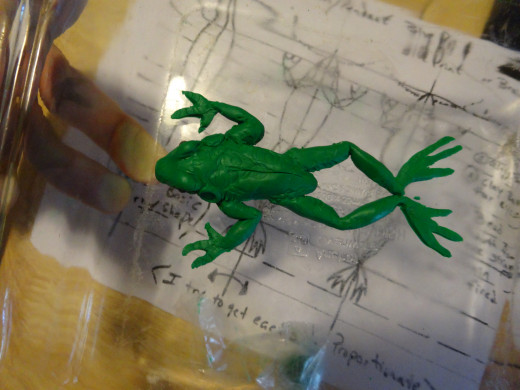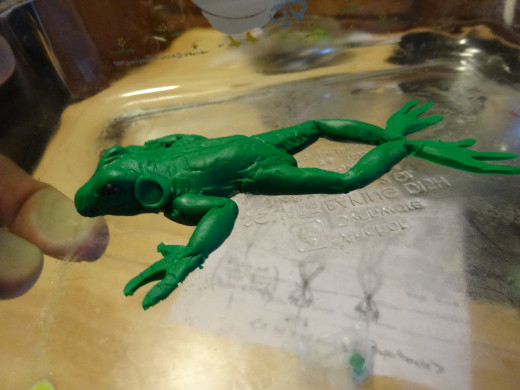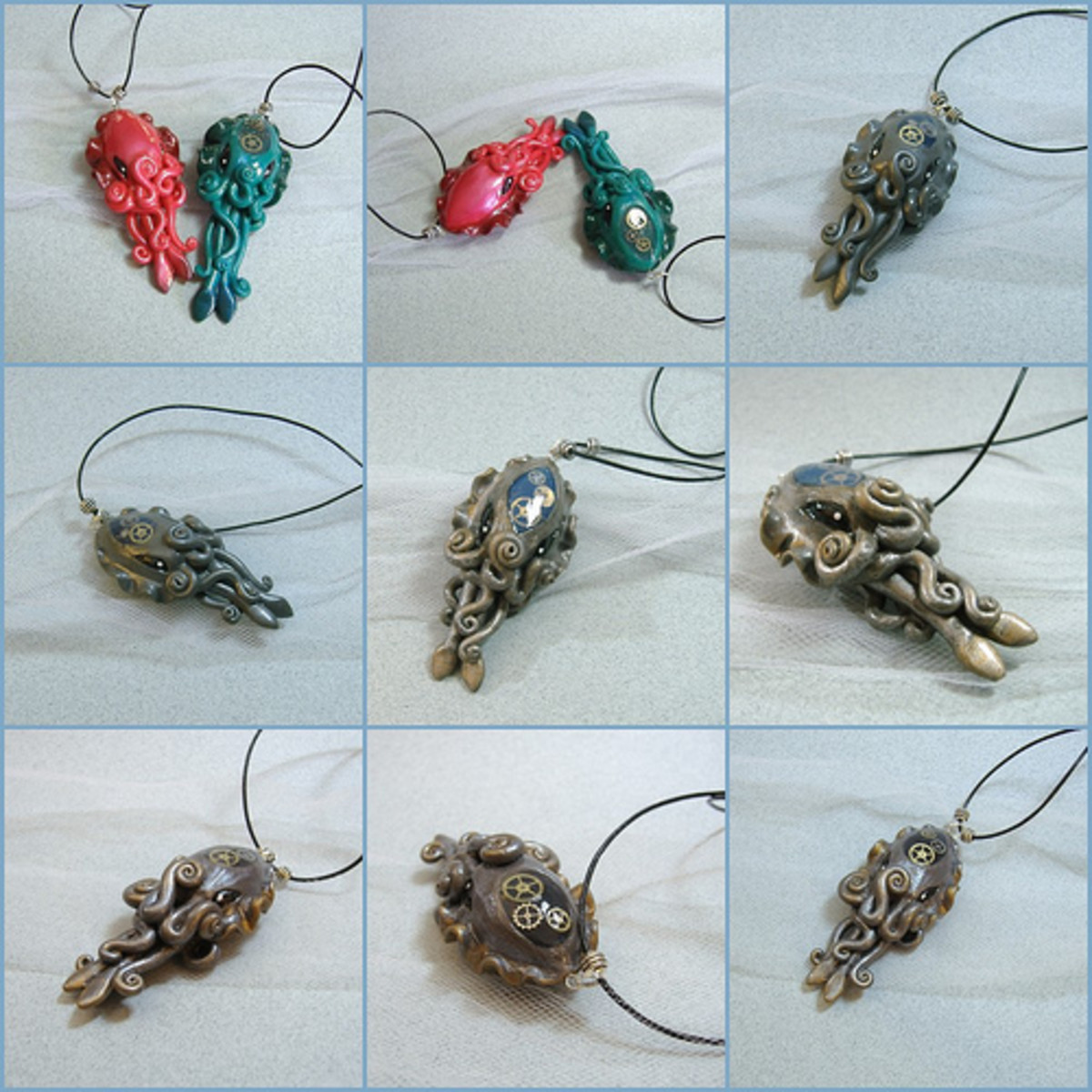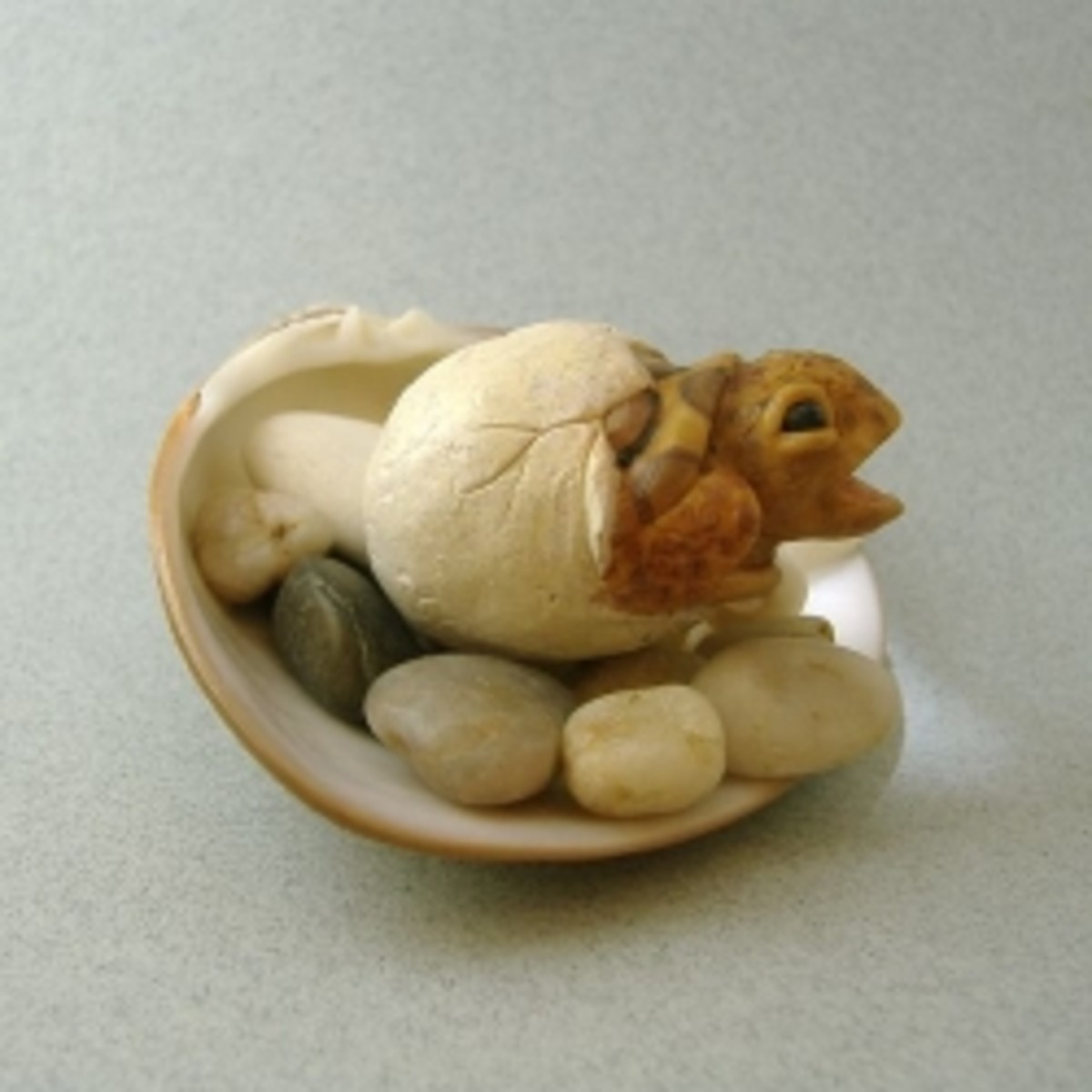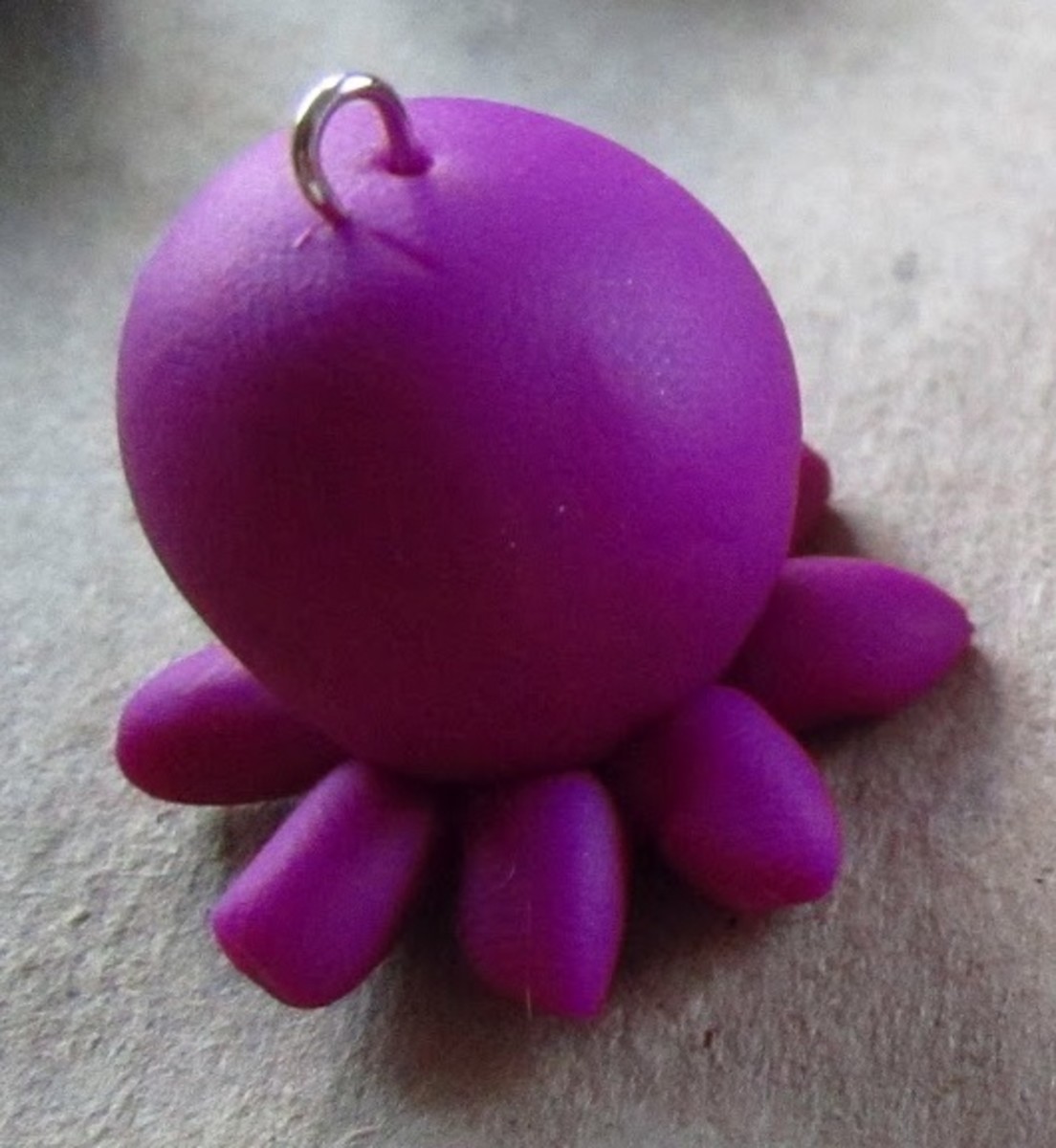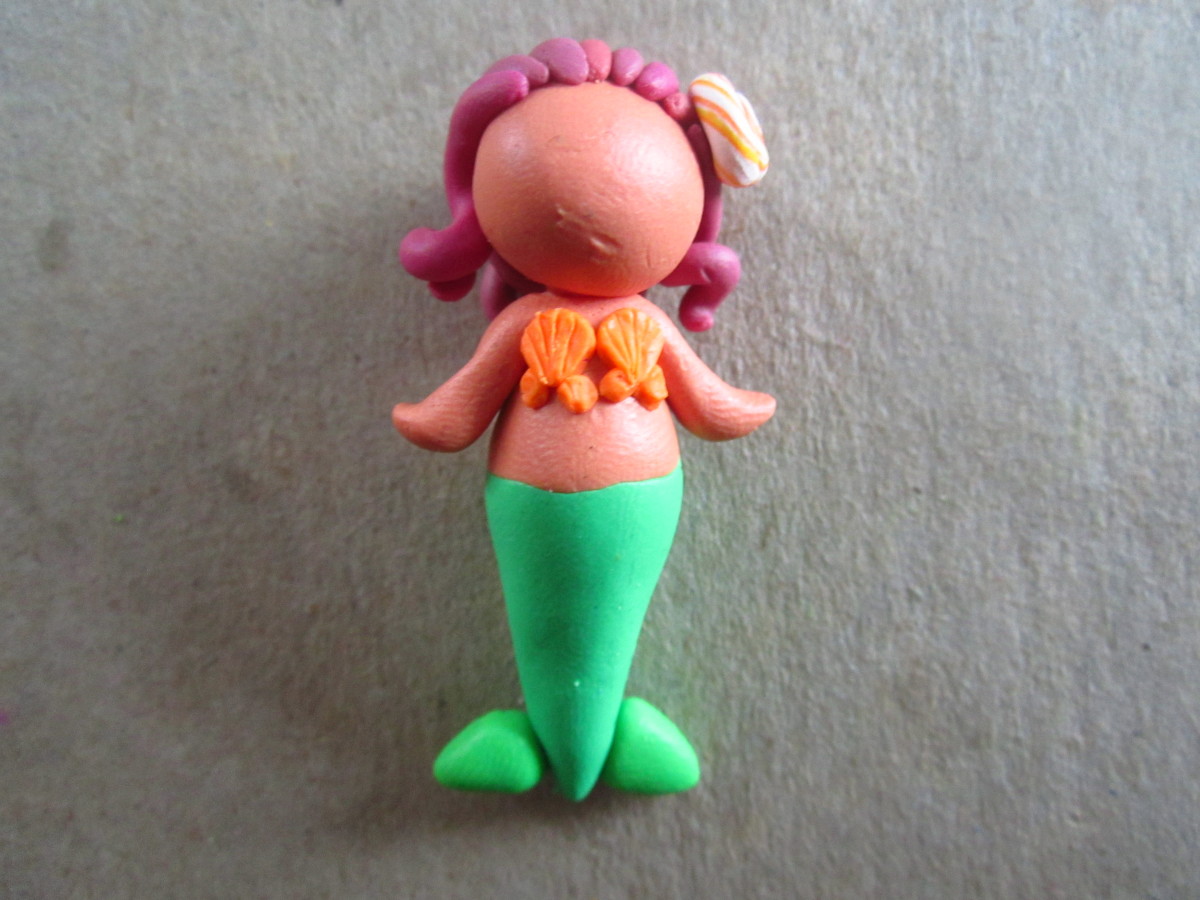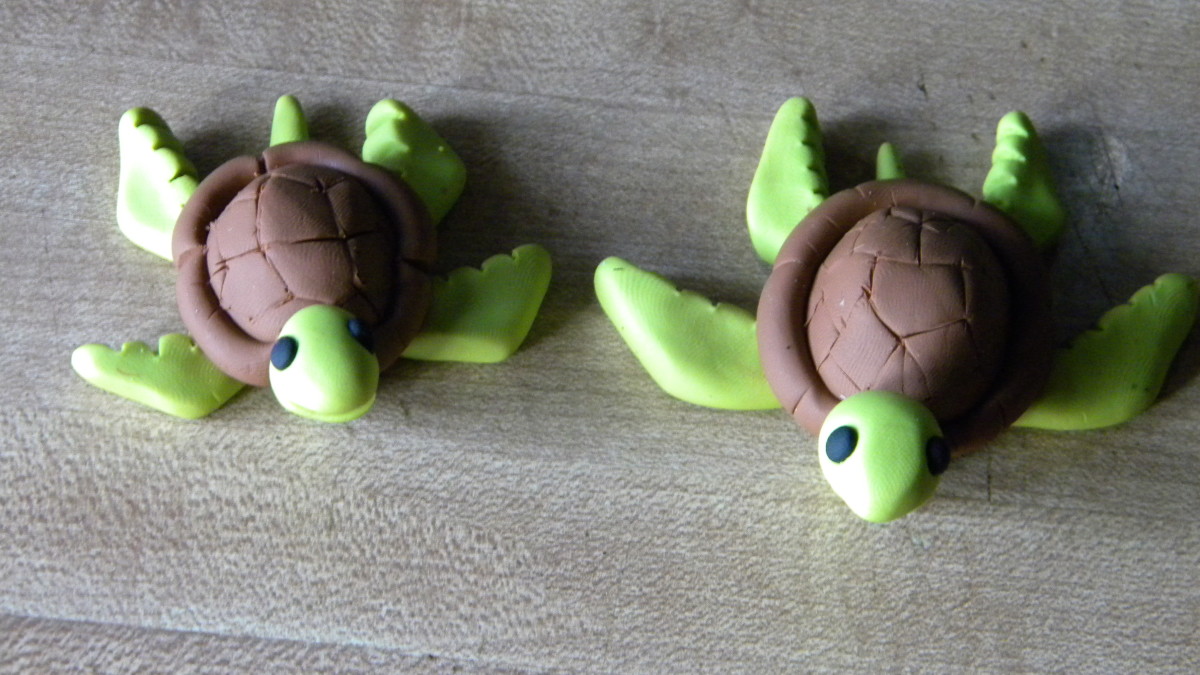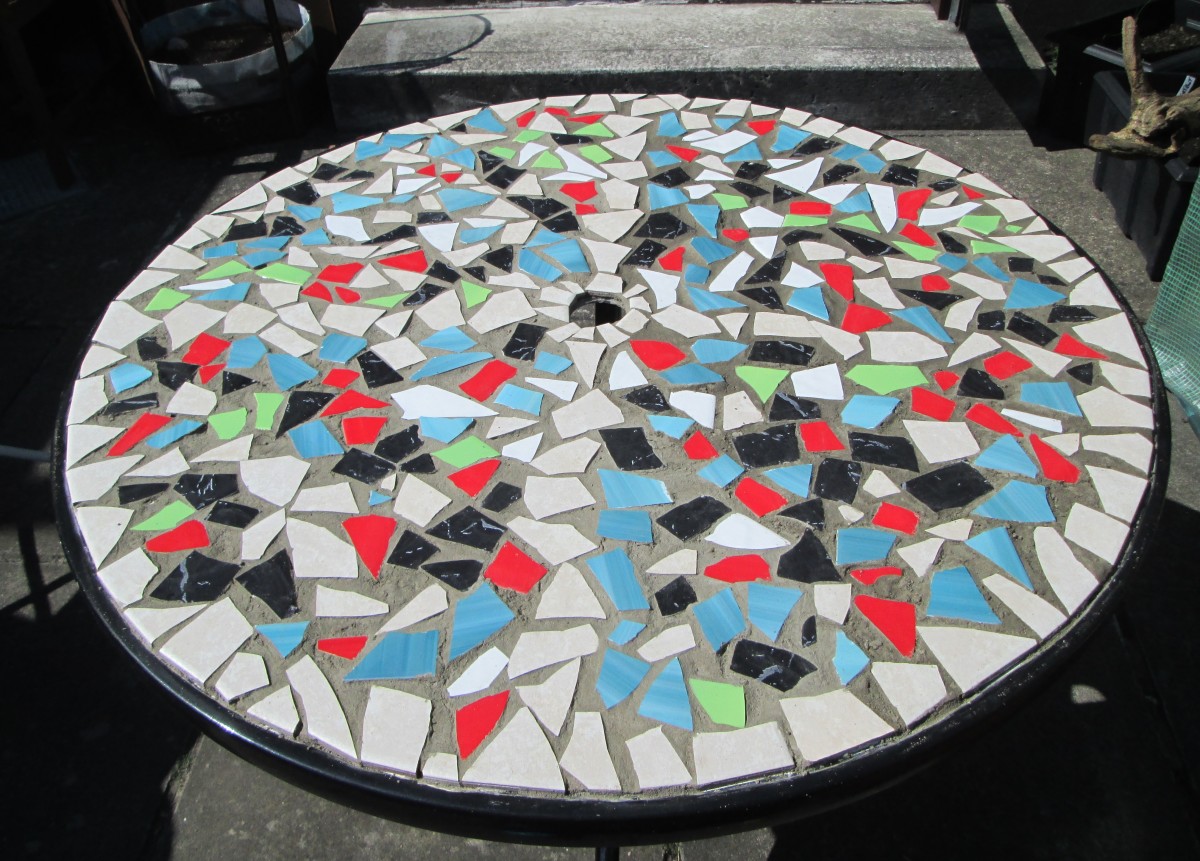Making a Frog Charm or Pendant From Sculpey.
Making a Frog Pendant or Charm: Example life size frog
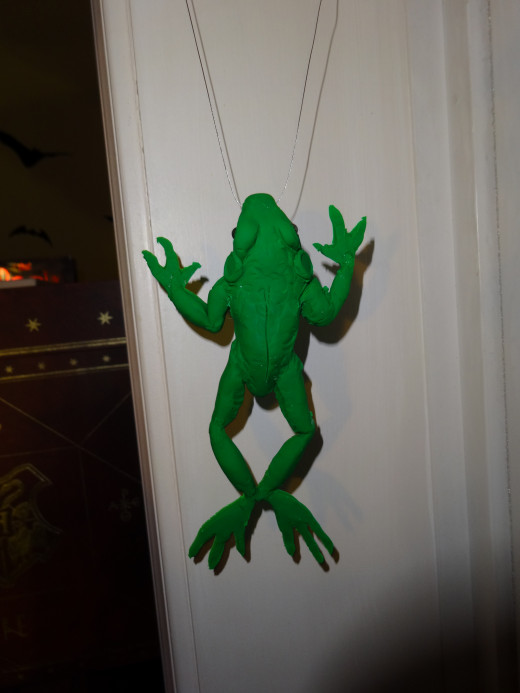

Frog Pendant or Charm
Do you want to make a Pendant or Charm that looks exactly like or resembles a frog? First I am going to start off by writing that I am making a large Pendant for a costume that I am working on for a themed wedding for a relation so I don't normally make them this big. It does help in taking pictures since you get to see a more blown up instructional. You can make the frog any size you want, I will give side notes on some additional or optional directions you can do to help if you are making the piece smaller.
I designed my frog to be as realistic as I can get it and still be able to attach it to a string to highlight a bit of costume I will be wearing later this summer. I find it is important to know the size of the pendant or charm you will be making because you can draw a blueprint or a quick brainstorm of the piece at the size you want and it will help you as you go along to keep to the size.
With the plans you can design your frog to be little and more bead-like, or you can make a more design type frog and go with a more silhouette style. I have made a cartoon-like frog before.
This plan of using a blueprint or brainstorm works well with any clay project. You can post a comment if you have something specific in mind and I can make it.
Polymer Clay
Sculpey is a polymer clay you can bake in the oven. You can also buy Fimo and get the same result, but I use Sculpey primarily because I have not tried Fimo yet. I first learned about it when I worked in the craft store (A.C.Moore). (I also buy a lot of my supplies from Amazon). I was also going to college at the time and someone was using it during sculpture class. Now I still prefer kiln clay to any clay but when you are in a similar situation like I'm in and you just don't have the space or the time for a kiln Sculpey is easy to work with ( a little trickier for those like me who give off a lot of heat) and when you are ready you just bake it at 275 degrees Fahrenheit for 15 minutes per quarter inch of clay. It also comes in a lot of different colors so unlike with Kiln clay where you make your glazes or colored slips you just go out and buy the color you need. The only down side I have with it is that the clay softens as you kneed it and warm it up, so I being a good heat source need to put it in the fridge every once in a while for a few minutes to harden it up again. It also softens in the oven before it hardens, so you need to keep in mind any slumping that will take place when you make something, so in some cases making something in pieces then just gluing it together works best.
Scoring: lightly cutting the surface of two pieces to be joined.
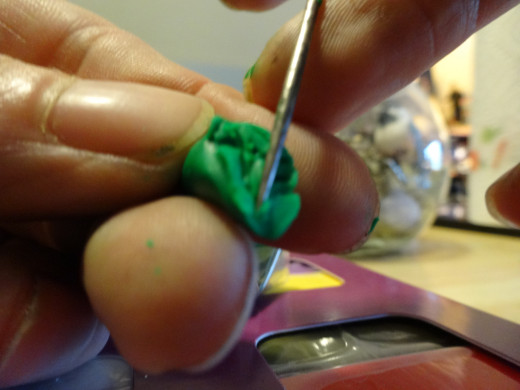
Polymer Frog Pendant material

Ingredients: Polymer Frog pendant or charm
- 1 Glass ,or Metal, Dish (oven safe), I use a glass dish that I have designated my clay dish
- Your Choice of clay tools Set bought at the store, toothpick, paperclip, stick, rock..., Anything that you want to use to cut, carve, and or smooth the soft clay
- 1oz Bar Green Polymer Clay (sculpey or Fimo), I used the whole bar you might just want half if your making smaller than a 5inch long frog
- 2 Round glass beads (your choice of color), These will be the frogs eyes
- 1 Tube bead, This is for the mouth where the necklace string will go through
- 1 Sheet of white paper or gragh paper, I like to make a blueprint of what I'm Doing
Blueprint or Brainstorm of Frog Pendant
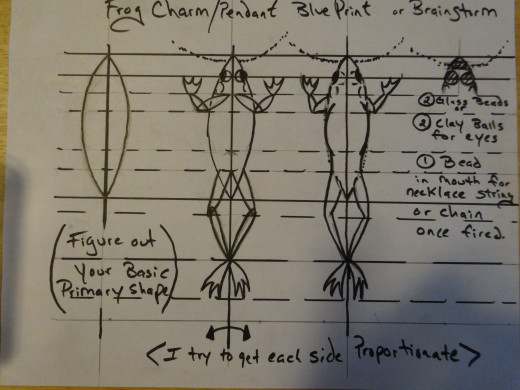
Polymer (Sculpey) Frog Pendant or Charm
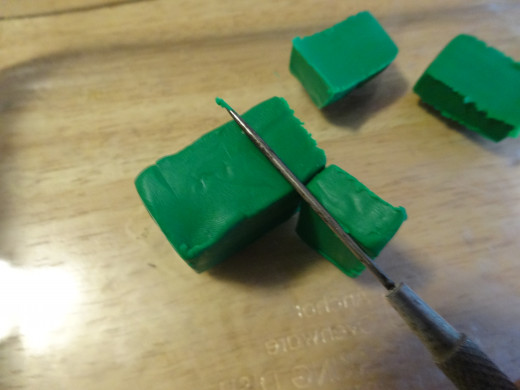
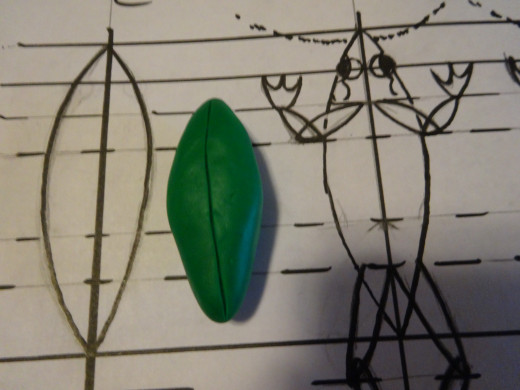
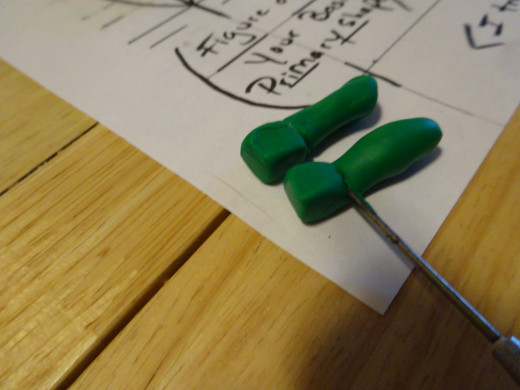
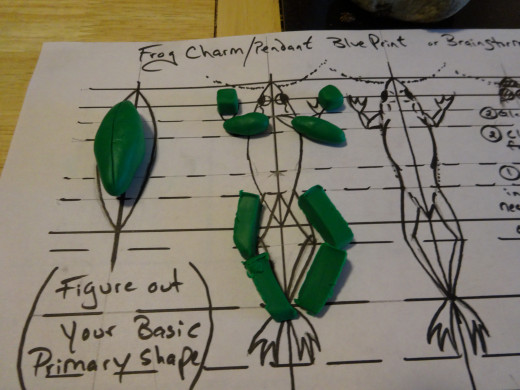
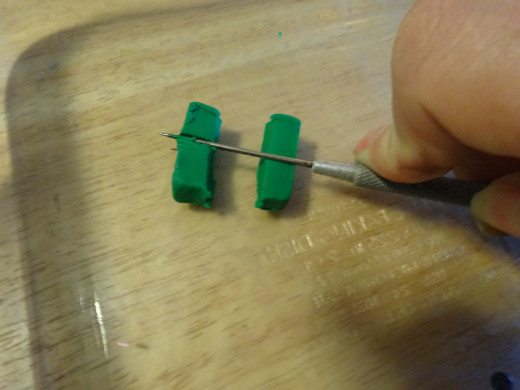
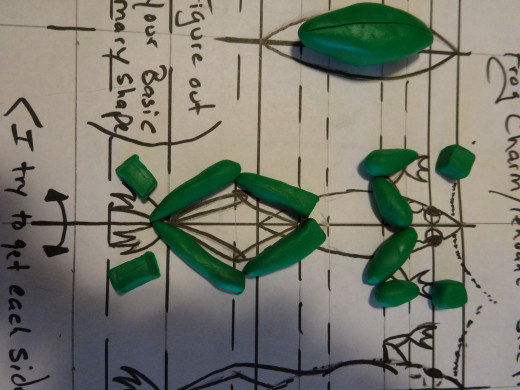
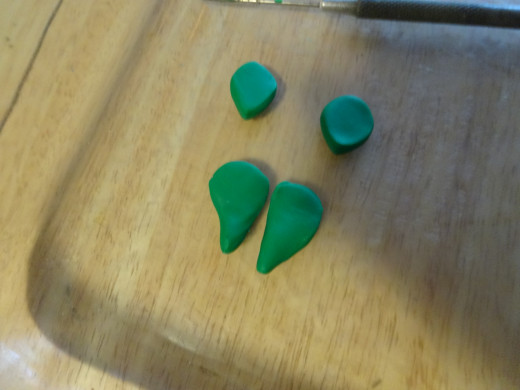
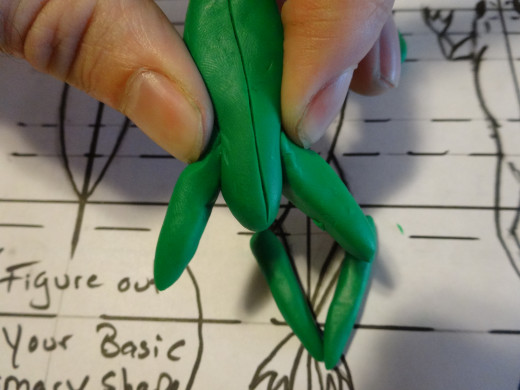
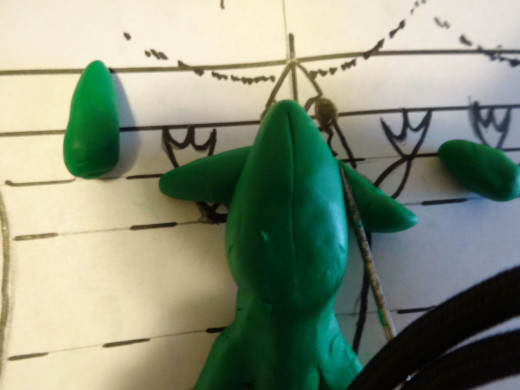
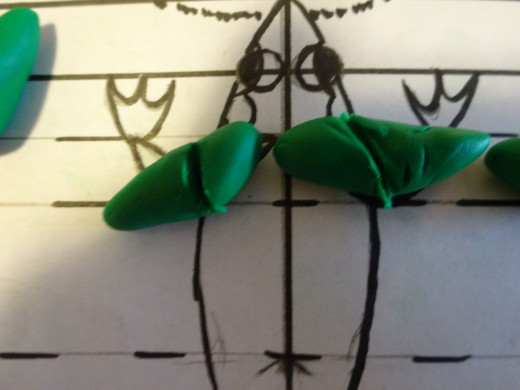
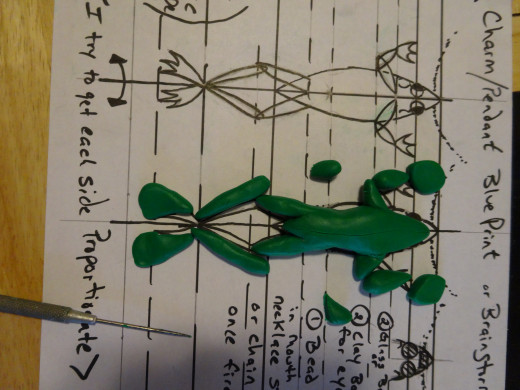
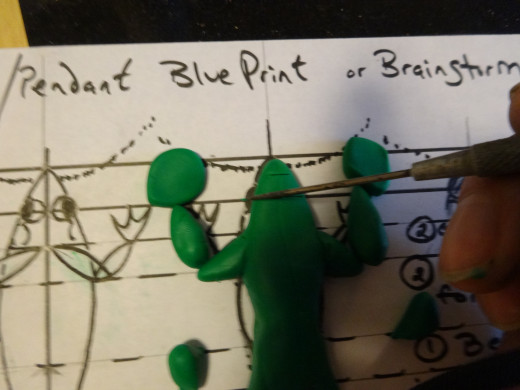
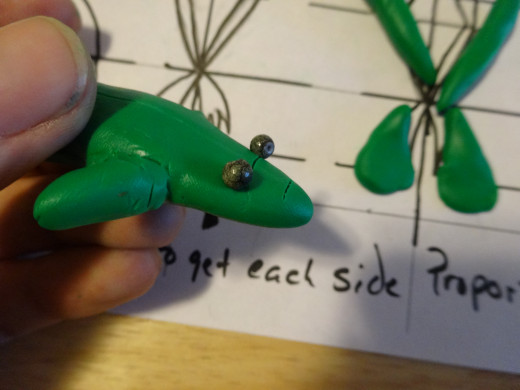
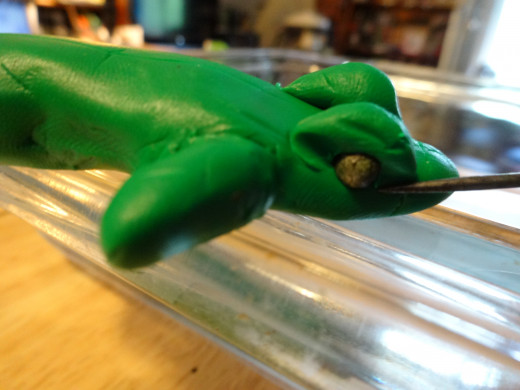
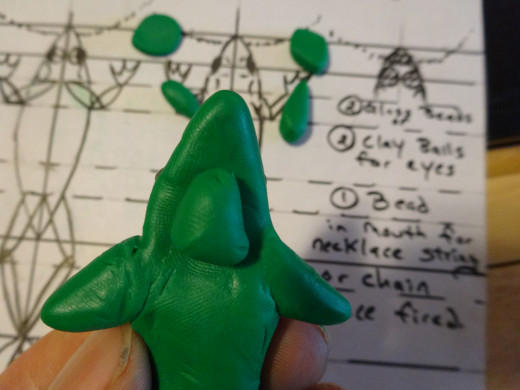
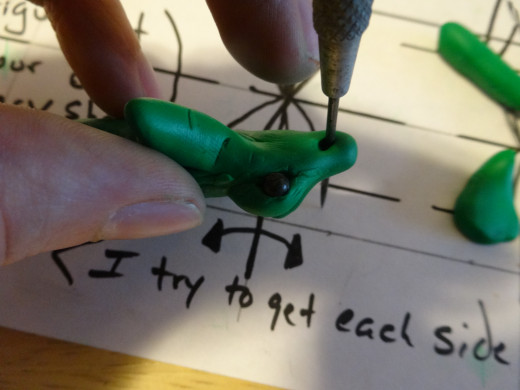
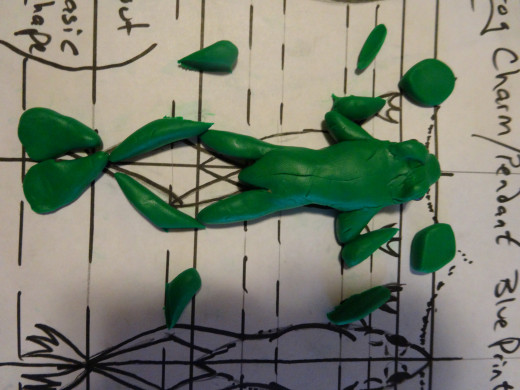
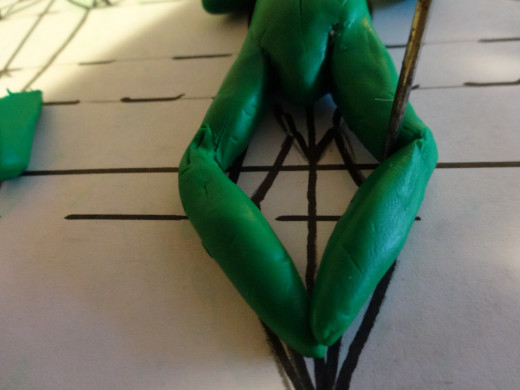
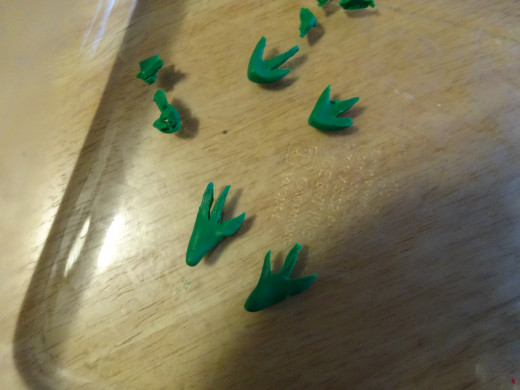
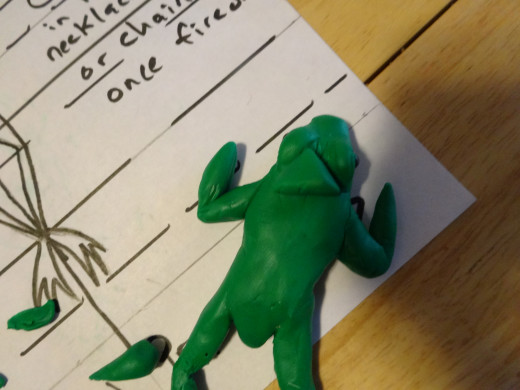
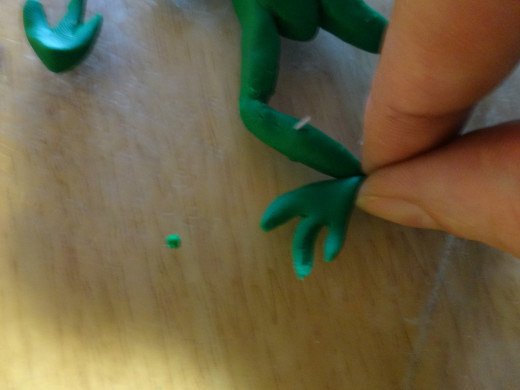
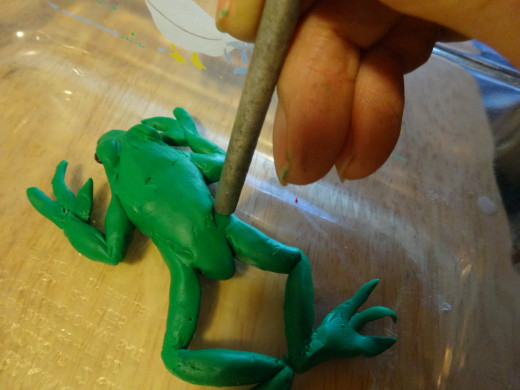

Instructions: Polymer Frog Pendant or Charm
- I usually make a blueprint or Brainstorm on paper of what my Pendant or Charm is going to look like. I get down dimensions because I like it to be proportionate right side and left side. First thing with the blueprint I like to determine what primary shape I am working with for most of the sculpting (its not set in stone, as you will always need to do minor adjustments). In this case I have decided the main body of the frog is a kind of narrow oval. I figure this by looking at images of the frog in question, or at a frog itself. I then figure out where the appendages and everything else will be placed on this shape and mark that up.
- Take out your Clay bar and cut off 4 small sections, leaving half the bar. The 4 sections will become the arms/legs and feet and the half remanding is for the body. (I use a needle tool for most of the things I do)
- Take the 4 smaller pieces and cut them in half going the long way. This splits the quantities up into 8 slices.
- (4) pieces of the clay slices are for the upper part of the arms and legs. (the 2 pieces for the arms, cut a little square off of each for hands )
- (2)pieces of the clay slices are for the lower part of the arm (to be split again so there is 2 pieces for the bottom feet)
- (2) pieces of the clay slices are for the lower part of the legs.
- I place all the pieces on the blueprint for now while I work on the next step.
- With the half of the clay bar reserved for the main body. Shape it into the shape designed in the blueprint. I pinch the sides and then round the edges as I flatten it into the shape. (not completely flatten unless you want to, I like dimension in the project I'm working on, So I am going with more realistic so my frog will have a little more meat on it. If your planning on just having an aerial view of it go ahead and flatten) I then draw a line down the middle for a guideline.
- Round the edges on the pieces for the legs and arms, elongating them if needed. (the legs are going to be longer than the arms.) This is when I like having the blueprint because as I'm going along I can match up with my paper.
- Attach the upper legs to the main body using a scoring technique (scoring is when you make light slicing marks on the 2 pieces that are going to be connected allowing them to stick better) I then smooth out as needed.
- Attach the upper pieces of the arms. (I set the pieces on the blueprint and hold the main body to it to determine if I made the pieces to big. I cut with my tool as needed. Then I attach the same way I did with the legs.
- Optional: If doing a small pendant or charm and you want to be doubly sure that the legs and arms don't fall off you can build the legs and arms without attaching them to the body and glue them after everything has fired. Just make a mark where they will attach to the main body.
- I pinch in the side of the body a little where the ribs would end and the legs would start, to give a little more realism for later on. (This is optional). I might put this in the fridge for a minute or two as I give off heat and the clay might be getting really soft right now)
- I take the pieces for the feet and flatten them into the shape I desire for the feet and hands (using the squares for the hands and the longer pieces for the feet). I then pinch the corner where the foot will eventually attach to the lower leg.
- I lay out the pieces on my blueprint to see how its doing, and mark off lightly where I will be putting the eyes and bead for string.
- I flatten the head a little more, If it needs it. Then add the beads for eyes. Just set them on top where desired.
- Now when you trimmed up the upper arms to fit better you ended up with a couple of pieces of clay. Cut one of the pieces in half, roll the pieces into a little cylindrical shape, and place over the bead creating an eye socket. Smooth with tool so the eye socket and head look like one piece, with an eye in it.
- With the other left over piece make a little triangle wedge and place on the bottom of the head, smoothing the piece on after you have scored and attached. This is giving you a better area for the necklace bead to go into.
- Poke a hole with a tool and stick the bead in. Don't bury the bead. Make sure you can see the hole on either side after you have smoothed it in. I then smooth the nose a little to make it more frog-like.
- Line the frog back up on the blueprint and match the lower legs and lower arms up with the body. I find I usually need to a little more trimming. This is fine as you usually need clay later to fix any mistakes or additions desired. Attach the lower legs and arms like you did with the upper parts, using scoring.
- I usually have to put the project in the fridge for a few minutes at this time because I have started to soften the clay too much and the pieces are in danger of falling off. Placing it in the fridge gives it strength again.
- The feet: cut out around the toes. I usually only have 3 toes per foot. Then flatten the foot a little more.
- With some of the access clay I have accumulated during trimming and adjusting I fill in the top of the head more, to help strengthen where the eye beads are being held down. I make a triangular wedge and score and smooth it down with my tool.
- I Score and pinch on the feet and hands. Pinching them on kind of gives it a joint.
- With the backside of my needle tool I go around and fix the dimensions and texture of the frog by lightly taping and smoothing the surface. Don't press down too hard or the clay figure will get stuck to its surface. You can use anything that will give you the texture you want, even a spoon, or the back of a butter knife.
- I then, with a little extra clay left over, will make 2 little circle disks and put it on either side of the frog's eye (after scoring it) and then press my tool into it to give it texture. I also will draw in the mouth.
- With the frog on an oven-safe glass or metal dish I preheat the oven to 275 degrees Fahrenheit and cook the frog for 15 minutes for every quarter inch of clay thickness. In my case my frog is an inch thick so half an hour.
- Take the frog out and I will let it sit over night. It is not completely solid until it cools off. It is still a little soft when you take it out of the oven.
- If you have your frog in pieces you can now glue those pieces on. I use goop or E6000. You can also Glaze the frog with Sculpey glaze and this will strengthen your piece even more.
Polymer Frog Pendant or Charm
Polymer Frog Pendant or Charm
